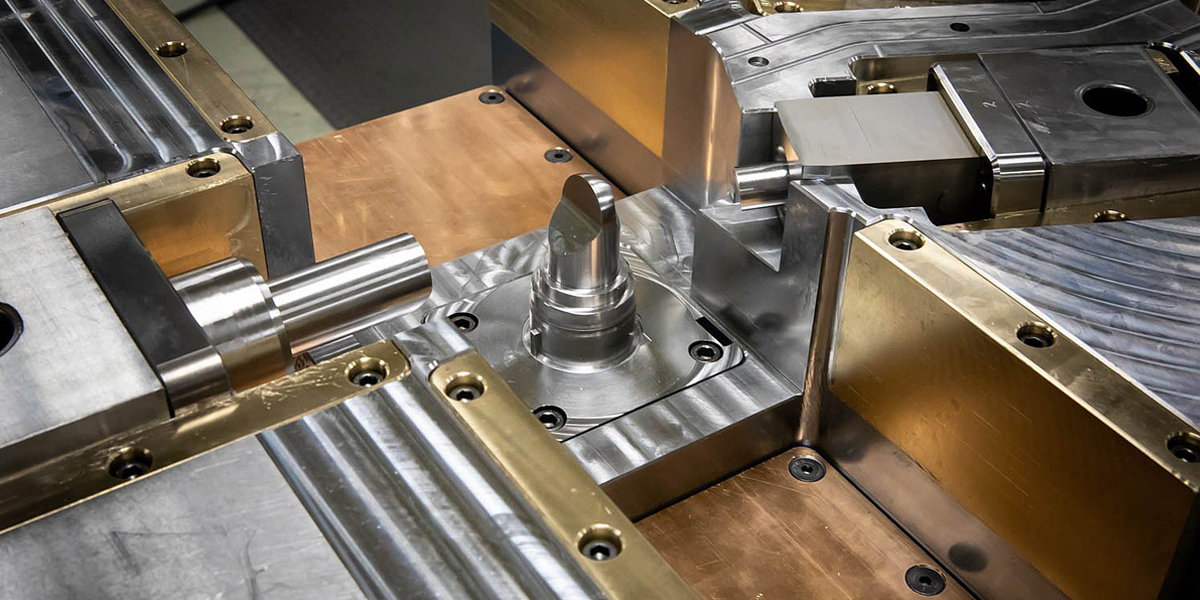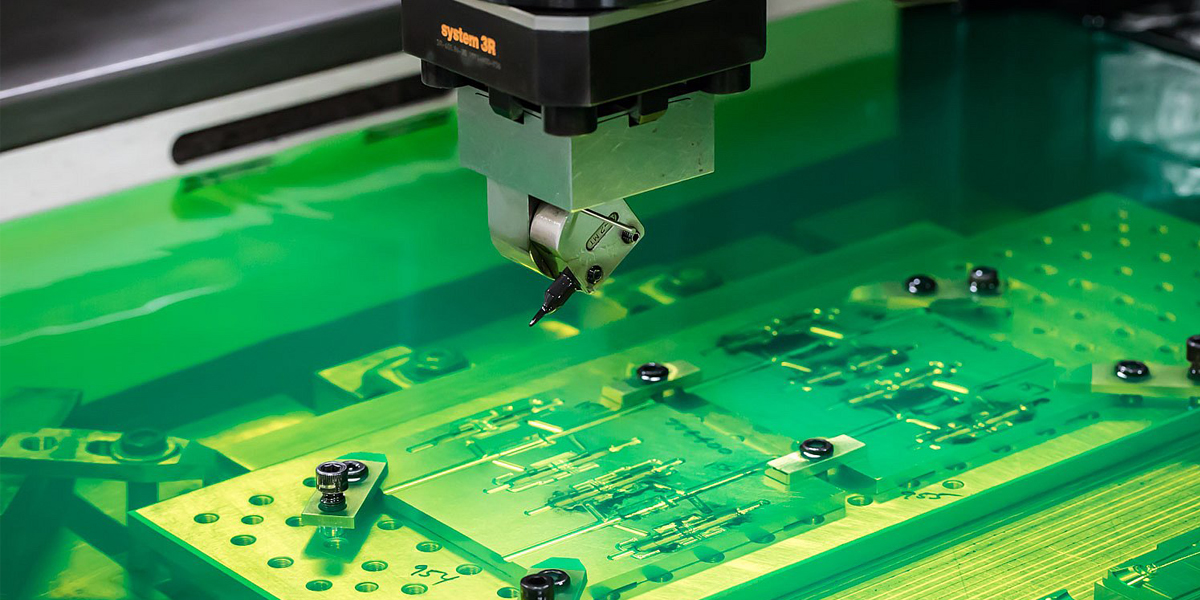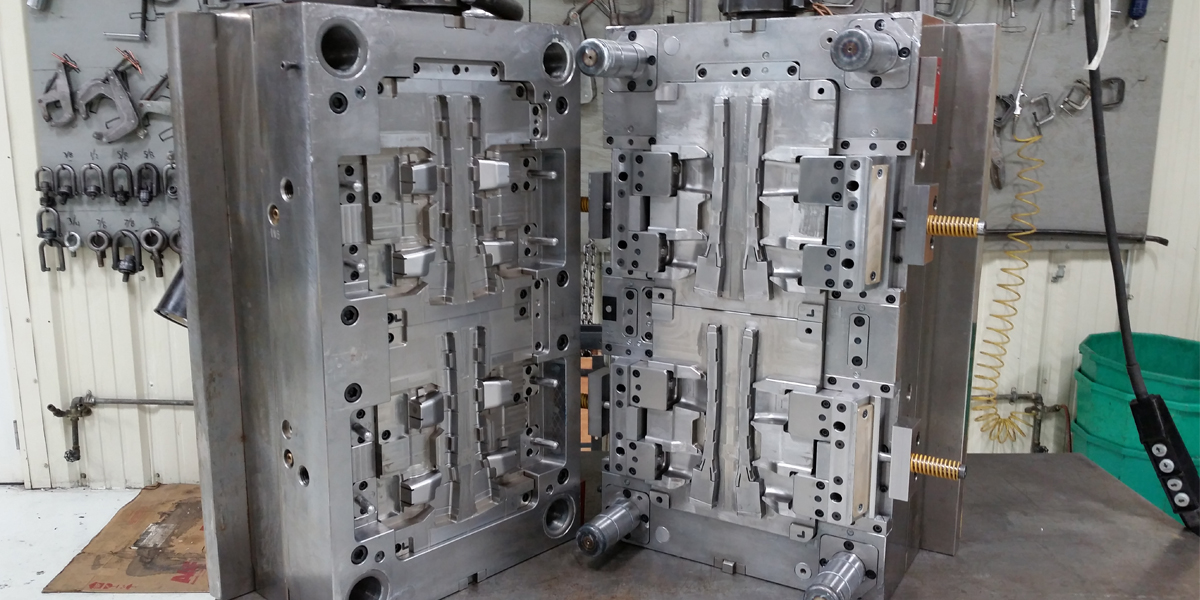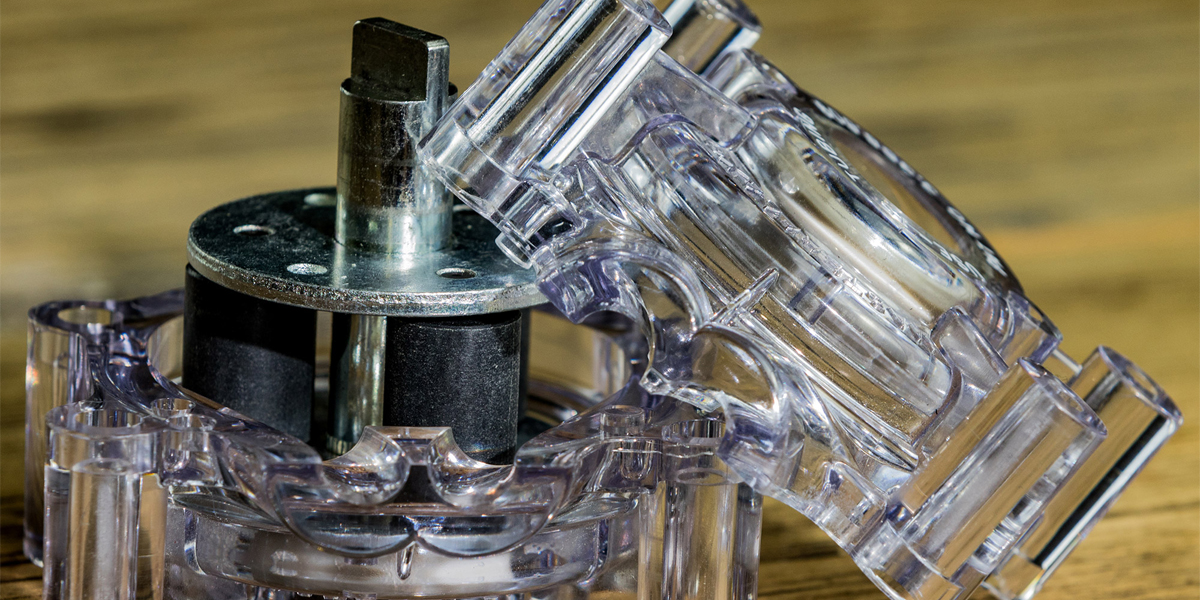injection mold tooling, also known as injection mold or simply mold, refers to the equipment used in the injection molding process to manufacture plastic parts in large quantities. Injection molding is a popular manufacturing method used in various industries to produce a wide range of products, including consumer goods, automotive components, medical devices, and more.

The Importance of Injection Molds for Precision Manufacturing
Consistency and Precision: Injection molds are designed to produce parts with high precision and consistency. The molds ensure that each part is identical, meeting the specified dimensions and tolerances. This level of accuracy is essential in industries where precision is critical for the proper functioning of the final product.
Complex Geometries: Injection molding allows the creation of parts with intricate and complex geometries that may be challenging or impossible to achieve with other manufacturing methods. The molds can replicate detailed features, thin walls, undercuts, and internal structures accurately, enabling the production of complex parts with tight tolerances.
Cost-Effectiveness for Mass Production: Injection molding is a highly efficient manufacturing process for mass production. Once the mold is created, the cost per part decreases significantly compared to other manufacturing methods, making it cost-effective for large-scale production runs.
Material Versatility: Injection molding supports a wide range of thermoplastic and thermoset materials, offering versatility in material selection. Different plastic materials can be used in the same mold, allowing manufacturers to produce parts with varying properties and characteristics.
Speed and Efficiency: Injection molding is a rapid process, enabling high production rates. The fast cycle times mean that large quantities of parts can be produced in a relatively short period, making it ideal for industries with high demand and quick turnaround requirements.
Reduced Waste: The injection molding process generates minimal waste as any excess material can be recycled and reused for future production runs. This contributes to the overall sustainability of the manufacturing process.
Improved Surface Finish: Injection molds can produce parts with excellent surface finishes directly from the mold, reducing the need for additional finishing processes.
Automation and Integration: Injection molding can be easily automated, further enhancing production efficiency and reducing labor costs. It also allows for seamless integration with other manufacturing processes, streamlining the overall production workflow.
Quality and Durability: Injection molds are typically made from high-strength materials like steel, ensuring durability and longevity. A well-designed and properly maintained mold can withstand thousands or even millions of cycles, providing consistent quality over an extended period.
Advantages of Injection Mold Tooling:
Cost-Effective Mass Production: Once the injection mold is created, it allows for the cost-effective mass production of parts at a low cost per unit, making it ideal for high-volume manufacturing.
High Precision and Complexity: Injection mold tooling enables the production of highly precise and complex parts with consistent quality and tight tolerances, meeting specific design requirements.
Design Flexibility: Injection mold tooling offers design flexibility, allowing for the production of parts with intricate features, multiple textures, and complex geometries.
Reproducibility: Injection mold tooling ensures reproducibility, resulting in consistent part quality and reducing the likelihood of defects or variations in the produced parts.
Efficiency and Automation: Once the mold is set up, the injection molding process can be highly automated, leading to increased production efficiency and reduced labor costs.
Fast Production Cycles: Injection mold tooling allows for fast production cycles, with each cycle producing one complete part, contributing to quick turnaround times and meeting tight production schedules.
Wide Material Selection: Injection mold tooling supports a broad range of materials, offering versatility to meet different application requirements and material properties.
Disadvantages of Injection Mold Tooling:
High Initial Cost: The creation of injection mold tooling involves a significant upfront investment, which can be a substantial barrier for small-scale production or prototypes.
Lead Time: Developing the injection mold tooling can take several weeks or even months, which may lead to delays in starting production.
Design Changes are Costly: Once the tooling is manufactured, making design changes can be costly and time-consuming, especially for complex molds.
Limited Production Flexibility: Injection mold tooling locks manufacturers into a specific design and material, limiting flexibility for quick changes in production needs.
Maintenance and Repair: Injection mold tooling requires regular maintenance, and occasional repairs can add to the overall production cost.
Part Size Limitations: The size of the injection mold tooling is limited by the size of the injection molding machine and can restrict the production of very large parts.
The injection mold tooling consists of two main parts:
Mold Cavity: This is the part of the mold that shapes the final product. It has a cavity with the exact shape and dimensions of the desired plastic part. The molten plastic is injected into this cavity to take the shape of the product.
Mold Core: The mold core is a counterpart to the mold cavity. It shapes the inside or internal features of the plastic part.
Classification of injection molds.
1. According to the molding method classification.
(1) injection mold: is used in the injection mold. Mainly used with the molding of thermoplastics, a few varieties of thermosetting plastics are suitable for the molding of the mold.
(2) compression mold: the Department of the hydraulic press on the compression process to mold plastic parts of the mold. It is mainly used for molding thermosetting plastics.
(3) pressure injection mold: the Department of hydraulic presses on the use of pressure injection process to mold plastic parts of the mold. It is suitable for molding thermosetting plastics.
2. According to the number of cavities: classification
(1) single-cavity mold: the system only has a cavity mold, each molding a plastic part
(2) multi-cavity mold: Department of two or more than two cavities of the mold, can be a mold molding multiple plastic parts.
Injection molds according to the molding characteristics of thermosetting plastic molds, thermoplastic plastic molds for two; according to the molding process for the transmission of plastic molds, blow molds, casting molds, thermoforming molds, thermoforming molds (compression molds), injection molds, etc., which compression molds to the overflow can be divided into overflowing, semi-overflowing, not overflowing three kinds of; injection molds to the casting system can be divided into cold runner molds, hot runner molds for two kinds of; to the loading and unloading methods can be divided into Mobile, fixed two kinds.

The injection molding process involves the following steps:
Plastic Resin: Raw plastic material, in the form of pellets or granules, is fed into the injection molding machine.
Melting: The plastic resin is heated and melted to a molten state.
Injection: The molten plastic is injected into the mold cavity at high pressure, filling up the space and taking the shape of the part.
Cooling: The mold is cooled to solidify the plastic and allow it to retain the desired shape.
Ejection: After cooling, the mold opens, and the solidified part is ejected from the mold cavity.
The mold tooling is typically made from high-strength materials, such as steel or aluminum, to withstand the high pressures and temperatures of the injection molding process. The tooling design and construction process require precision and expertise to ensure the final products meet the desired specifications and quality standards.
Injection mold tooling plays a crucial role in the injection molding process, it directly influences the quality, consistency, and cost-effectiveness of the production of plastic parts.
The injection mold tooling process involves the following steps:
Product Design: The first step is to create a design for the plastic part that needs to be manufactured. This design is usually created using computer-aided design (CAD) software and takes into account the part's shape, dimensions, and other specifications.
Mold Design: Based on the product design, a mold design is created. The mold design includes the layout of the mold cavity and core, as well as any additional features needed for the injection molding process, such as cooling channels and ejector pins.
Material Selection: The appropriate materials for the mold are selected, usually high-strength metals like steel or aluminum. The choice of material depends on factors such as the expected production volume, the type of plastic material to be used, and the complexity of the part design.
Mold Manufacturing: Once the mold design is finalized, the mold is manufactured using various machining processes like milling, drilling, and CNC (Computer Numerical Control) machining. GD-HUB‘s highly skilled toolmakers and machinists are involved in this stage to ensure precision and accuracy.
Mold Assembly: After the individual components of the mold are machined, they are assembled to create the complete injection mold. The mold is then polished and finished to ensure a smooth surface, which will be replicated on the final plastic parts.
Mold Testing: Before production, the mold undergoes testing to ensure that it functions correctly and produces parts of the desired quality. This testing phase helps identify and address any issues related to mold functionality, part ejection, cooling, and overall performance.
Injection Molding Setup: Once the mold is validated, it is installed in an injection molding machine. The machine is set up with the appropriate temperature, pressure, and injection speed settings based on the type of plastic material being used and the specific requirements of the part.
Production: With the mold set up in the injection molding machine,the plastic material is melted and injected into the mold cavity, where it takes the shape of the part. After cooling and solidification, the mold opens, and the finished part is ejected.
Quality Control: Throughout the production process, quality control checks are performed to ensure that the produced parts meet the required specifications and quality standards.
Maintenance: Regular maintenance and cleaning of the mold are essential to keep it in good condition and prolong its lifespan. Proper maintenance helps prevent defects and ensures consistent production quality.

The two primary materials commonly used for injection mold tooling are:
Steel: Steel is the most common material used for injection molds due to its excellent durability, hardness, and wear resistance. Different types of steel, such as P20, H13, and S136, are selected based on factors like the expected production volume, complexity of the mold design, and the type of plastic material to be used in production.
Aluminum: Aluminum is another material used for mold tooling, especially for low-volume production or when the mold needs to be created quickly and cost-effectively. While aluminum is not as durable as steel, it offers advantages such as faster machining times and lower costs. Aluminum molds are often used for prototyping or short-run production.
The selection of the appropriate material depends on various factors, including the production volume, part complexity, budget constraints, and expected tool life. High-volume production molds or molds used with abrasive plastics typically require higher-grade steels to ensure longevity and consistent performance. On the other hand, aluminum molds may be suitable for lower production volumes or less demanding applications.
It's important to note that the choice of material for injection mold tooling is a critical decision that can significantly impact the overall quality, cost, and efficiency of the injection molding process.GD-HUB's skilled mold designers and engineers consider various factors to make the right material selection for your specific application.
What industries are injection molds typically used for and what parts are produced?
Automotive: Injection molds are extensively used in the automotive industry to produce parts such as bumpers, dashboards, interior trims, door panels, and various other plastic components.
Consumer Electronics: Injection molding is a crucial process for producing components found in consumer electronics, such as mobile phone cases, computer keyboard keys, TV bezels, and remote controls.
Medical Devices: Many medical devices, including syringes, medical tubing, pill casings, and disposable items, are manufactured using injection molds.
Packaging: Injection molding is used to create a wide range of packaging products, such as bottles, caps, closures, containers, and food packaging.
Home Appliances: Injection molding is employed to produce parts for household appliances like washing machine components, refrigerator trays, and microwave parts.
Aerospace: Injection molds are used to manufacture various aircraft and aerospace components, including interior fittings and cabin parts.
Toys and Games: Plastic toys, action figures, board game pieces, and other play items are commonly produced using injection molds.
Construction: Injection molding is used in the construction industry for producing plastic parts like pipe fittings, drainage components, and electrical conduit fittings.
Furniture: Some plastic furniture components, like chair legs and handles, are made through injection molding.
Sports Equipment: Injection molding is used to create parts for sports equipment like helmets, protective gear, and components for exercise machines.

Get your personalized custom injection molds now!